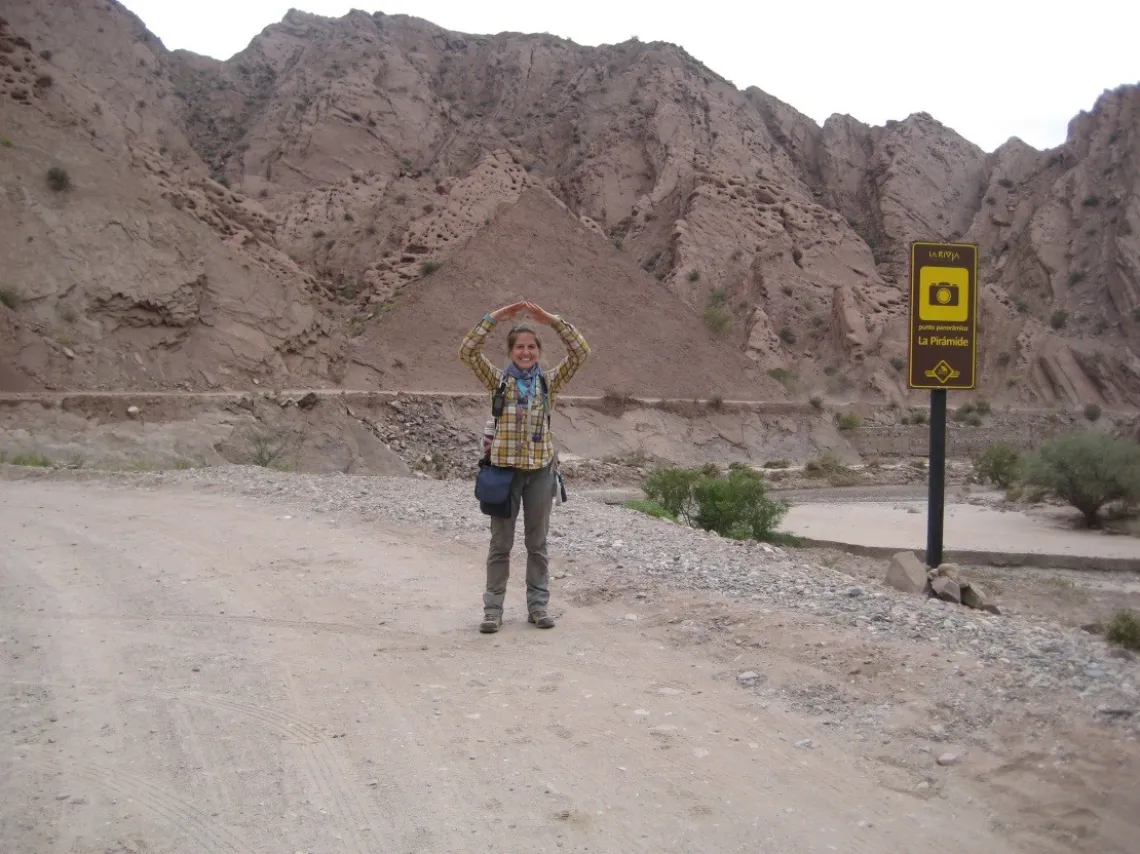Spotlight on Andrea Stevens - NSF Fellow

My name is Andrea Stevens and I am in the 3rd year of my PhD program in the Geosciences Department at the University of Arizona. I received my NSF Graduate Research Fellowship the second time I applied in 2014.
I study the development of the Sierras Pampeanas, a mountain range just east of the main Andean system in northern Argentina. This young mountain range popped up relatively recently in geologic time, probably in the last 25 million years. I use the natural radioactive decay of minerals from samples collected in these mountains to determine when and how fast the mountains came up. I also study sedimentary rocks that were deposited during the uplift of the Sierras Pampeanas to see how the drainage system changed during this time.
I applied to the NSF GRFP two times, during the first and second year of my graduate program. My first year I spent a lot of time writing multiple drafts of each essay, researching my (brand new) project, and rallying faculty members to write letters of recommendation. I was very disappointed when I did not receive the fellowship on my first try. The reviewers liked my ideas, but thought that the scope of my project was too broad. I believe the feedback from this first attempt was critical to my success the second time I applied. I started rewriting my essays even earlier for my second try and addressed each of the concerns that I had received in my reviews. Perhaps just as important, I used this feedback to help guide the direction of my actual project, trimming down the scope of some of my original ideas.
Selecting faculty members to write recommendation letters is one of the most critical, but I believe overlooked, aspects of the application process. Consider your faculty advocates as the gateway to include all of the information you couldn’t fit into your own essays. I strategically picked faculty who had different interactions with me. I included my advisor, a professor I had spent time working with in the field, and an undergraduate advisor. Take advantage of this limited space! To avoid content overlap between letters from these three sources, I sent each person my resume and a list of comments I wanted them to include. I asked one professor to comment on my extracurricular activities in the department and my TAing, another to focus on my research independence and initiative, and the third to highlight the collaboration I initiated in my project. All of my reviewers commented specifically on the recommendation letters I received.
Applying for the NSF GRFP was an important step in initiating and refining my research project. The support offered through the Graduate College was extremely valuable, and I believe ultimately contributed to my success. Capitalizing on the resources available through this program is valuable both for a successful application and for developing a new research project.

